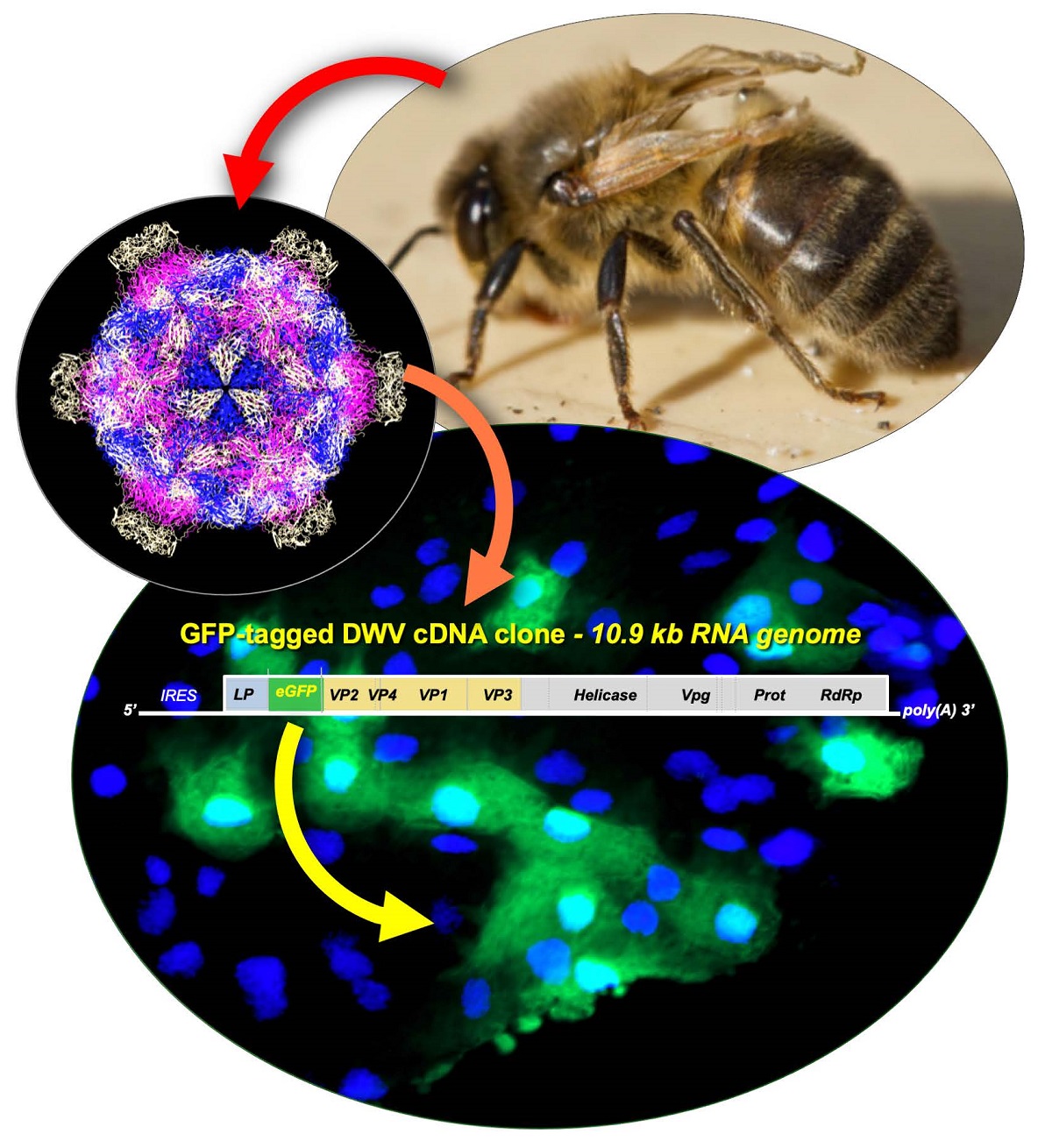We developed a honey bee RNA-virus vector based on the genome of a picorna-like Deformed wing virus (DWV), the main viral pathogen of the honey bee (Apis mellifera). To test the potential of DWV to be utilized as a vector, the 717 nt sequence coding for the enhanced green fluorescent protein (eGFP), flanked by the peptides targeted by viral protease, was inserted into an infectious cDNA clone of DWV in-frame between the leader protein and the virus structural protein VP2 genes. The in vitro RNA transcripts from egfp-tagged DWV cDNA clones were infectious when injected into honey bee pupae. Stable DWV particles containing genomic RNA of the recovered DWV with egfp inserts were produced, as evidenced by cesium chloride density gradient centrifugation. These particles were infectious to honey bee pupae when injected intra-abdominally. Fluorescent microscopy showed GFP expression in the infected cells and Western blot analysis demonstrated accumulation of free eGFP rather than its fusions with DWV LP and/or VP2 proteins. Analysis of the progeny egfp-tagged DWV showed gradual accumulation of genome deletions for egfp, providing estimates for the rate of loss of a non-essential gene an insect RNA virus genome during natural infection.

